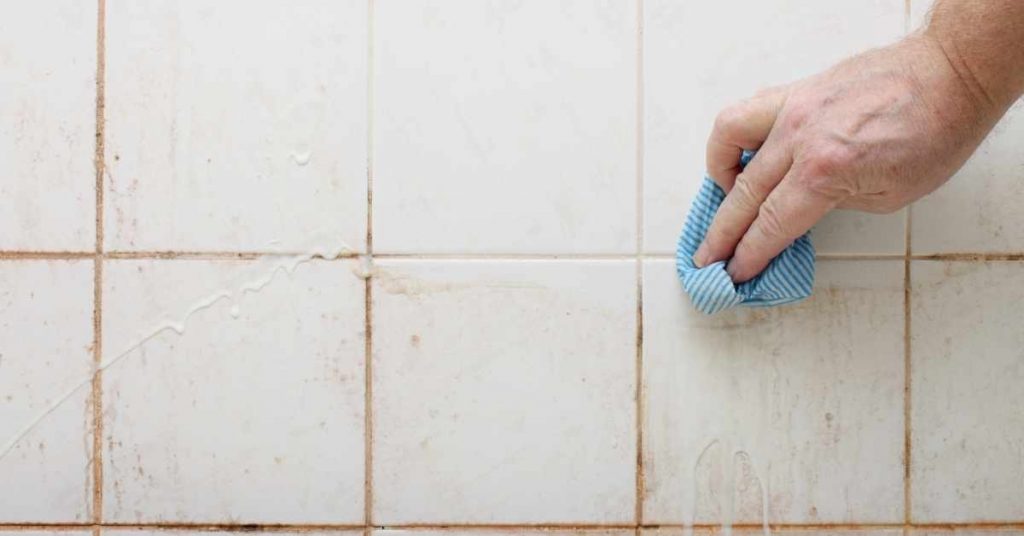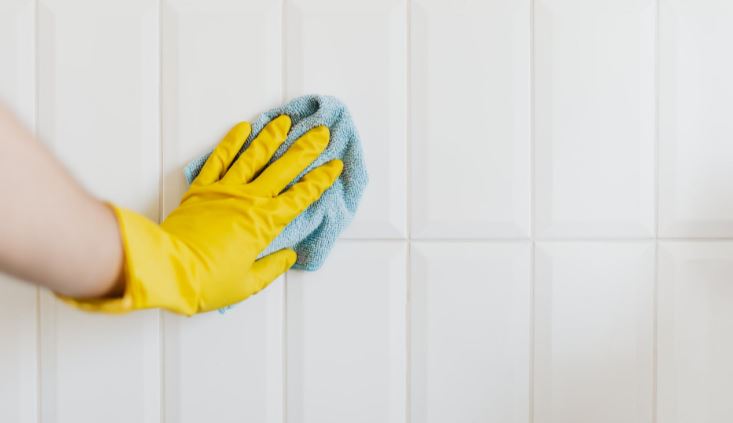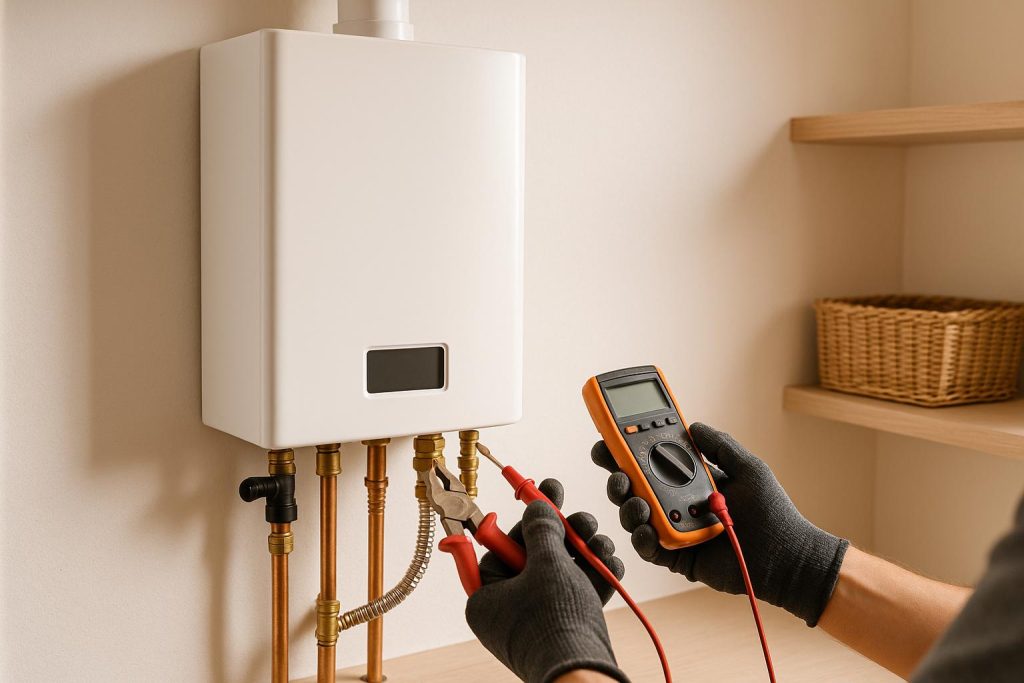
Pink stains or mold in bathroom fixtures can be unsightly and may indicate the presence of bacteria or fungi. Here’s a brief summary of how to get rid of pink stains or mold in bathroom fixtures:
Cleaning Steps:
- Safety First: Wear gloves and ensure proper ventilation in the bathroom when working with cleaning agents.
- Gather Supplies: You’ll need a few supplies, including a disinfectant cleaner, an old toothbrush or scrub brush, baking soda, white vinegar, and a cloth or sponge.
- Remove Items: Take out any removable bathroom fixtures or items like showerheads, grates, or drain covers, if applicable.
- Prep the Cleaning Solution: Mix a solution of equal parts water and white vinegar in a spray bottle. Vinegar is effective at killing mold and mildew and removing stains.
- Scrub with Baking Soda: For tougher stains, sprinkle baking soda onto the affected areas. Then, spray the vinegar solution on top of the baking soda. The combination will create a foaming action that helps break down stains.
- Scrub and Soak: Use the toothbrush or scrub brush to scrub the stained areas thoroughly. For fixtures that can be soaked, let them sit in the vinegar solution for 15-30 minutes to loosen the stains.
- Rinse and Wipe: Rinse the fixtures or surfaces with clean water to remove the cleaning solution. Wipe down the fixtures with a clean cloth or sponge.
- Reassemble: If you removed any fixtures, reattach them after they have been thoroughly cleaned and dried.
- Preventive Measures: To prevent future pink stains or mold, ensure proper ventilation in the bathroom, keep surfaces dry, and clean regularly with a disinfectant.
Is Pink Mold Harmful?
Serratia Marcescens bacteria which cause the pink mold/stains in bathroom fixtures pose no health risk to most healthy people when it occurs in small quantities.
It has however been linked to some illnesses like urinary tract infections (UTIs), wound infections and even pneumonia especially in people with compromised immunity. The bacteria also have many antibiotic resistance properties.
In most cases, the negative effects of Serratia Marcescens are usually cosmetic. It is the staining of white fixtures (since toilets, tubs and sinks are almost always white today) that concerns most homeowners.
Let us just say that you should get rid of the bacteria from your bathroom to keep it looking clean and also to be on the safe side health-wise.

Unlike other types of stains, pink stains are relatively easy to remove. Here are some of the best methods of removing the pink stains for showers, toilets, sinks and bathtubs.
1. Scrub using Vinegar
Vinegar is a weak acid with many household uses one of them being a fantastic cleaner. You can choose to use it as it is but some people opt to mix equal parts of water. Either way is fine.
Spray the vinegar on the affected areas of your bathroom and then use a soft-bristled brush to scrub away the stains. As I mentioned, the pink stains is actually a biofilm and not like rust stains which form rings in toilet bowls and need serious scrubbing to remove.
You will be surprised to know that most dish soaps will actually get rid of the pink stains from bathroom surfaces.
Disinfecting the fixtures using vinegar from time to time (after cleaning with ordinary drain cleaners) is a good way to ensure that the stains will not come back.
2. Use Baking Soda and Dish Soap
Baking soda is fantastic cleaning agent. Apart from cleaning surfaces, it also helps to deodorize so if apart from pink stains your drains are smelly then baking soda will do the job.
In this case, you will need to make a paste with a thick consistency using baking soda and dish soap. The quantity will depend on the severity and extent of the stains.
If the stains are in your toilet bowl around the waterline, try to remove as much water as possible from the bowl. You can do that by forcing it down the drain using a plunger.
Apply the paste all over the stained surfaces then scrub using a soft-bristled brush or sponge. I insist on soft-bristled brush since you don’t want to use something abrasive that will end up scratching the finish off from the fixture.
When you are done scrubbing, rinse off the paste and the broken down grime to see if you have gotten all the stains. Apply more paste and keep scrubbing if such is needed.
3. Disinfect Using Bleach
If you are dealing with a severe staining by Serratia, chlorine bleach is a sure way to get rid of it. It is stronger compared to vinegar, meaning it will penetrate through the biofilm and break it down with relative easy.
Even after removing the stains using baking soda and dish soap as is explained above, you may still want to disinfect the surface using bleach. Bleach kills any bacteria left clinging on the surface preventing further multiplication.
Put the bleach in a spray bottle and spray it all over the stained surfaces then wait for about 10 minutes. Again, use a soft-bristled brush to scrub away the stains.
Most people stay away from bleach since it is very harmful to the plumbing pipes and also kills the good bacteria in a septic tank. As such, I would advise that you to use it as the last resort.
The good thing here is that it is not like you are pouring a lot of it down the drain. You are only spraying a small amount of it to target the stains.
If you want to be on the safe side, you can follow it up with baking soda or borax to neutralize it.
4. Clean the Shower Curtain
How often do you clean your shower curtain? I think the best question should be “how often should you clean the shower curtain”?
If you think about it, your shower curtain (especially the bottom) is always damp and contains soap scum which is the perfect environment for Serratia Marcescens bacteria to thrive.
If your shower is machine-washable, drop it in the washing machine and run a gentle wash cycle using warm water. If there were pink stains you will be sure to get rid of them.
Prevention
As I have already mentioned, getting rid of pink stains from fixtures does not mean that they will not come back. Unlike hard water stains which you can control by softening the water, Serratia Marcescens bacteria are always airborne looking for a conducive environment to multiply.
The best way to control and prevent pink stains in your bathroom is by eliminating the conditions which make it favorable for them to thrive. Here are some of those ways.
- Since Serratia Marcescens bacteria multiplies in damp areas, wipe down bathtubs, shower walls, curtains and around drains to eliminate moisture.
- Remove soap scum from shower walls, floor and curtains using equals parts vinegar and water at least once a week. This is the best way to starve the bacteria.
- Clean the toilet regularly. It is impossible to not have water in the toilet bowl. The only thing you can do is to regularly clean the toilet using baking soda and vinegar to get rid of the bacteria even before it is noticeable.
- Clean pet water bowls the same way you clean a toilet bowl.
- Be careful not to scratch your fixtures. Scratched surfaces are hard to clean which means grime embed in the cracks providing nourishment to the bacteria and you will therefore always have pink stains in your bathroom.
- Machine-wash shower curtains on a gentle cycle using warm water once a month.
- If there are leaking faucets or shower heads making your fixtures always damp have them fixed.
And basically that is how to get rid of pink stains from your bathroom fixtures. I hope this guide was of help to you.






